Rural Prosperity
Water for Change
Jal Jeevan Mission: As Water Walks Home, So Does Freedom
Posted On:
14 AUG 2025 2:05PM
- Over 15 crore rural households have been provided with the tap water connections under the Jal Jeevan Mission.
- The Central Government is considering the continuation of the Jal Jeevan Mission until 2028.
- More than 24.80 lakh women across rural India have been trained to conduct water quality testing using Field Test Kits.
- Over 2.63 lakh villages have been declared Har Ghar Jal by their respective Gram Sabhas signifying community ownership.
From Walks of Water to Taps at Home
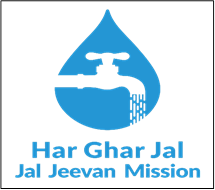
In Jhalariya, a small village in Madhya Pradesh, fetching water used to be an exhausting daily chore. Women walked long distances to collect it. Sometimes the wait took hours, and in summer, when sources ran dry, the search became even longer. The water was not always clean, but there was no choice. By the time they returned home, most of their energy was gone. Sitabai, a lifelong resident, remembers those days well. She says, “I would wake up at 4 a.m. daily to do household chores and fetch water, which was a 2-km walk one way. After this, I had to leave for work. I could not be late for attendance at the construction site where I was a labourer.”
But things changed in 2021, when Jhalariya successfully implemented the Jal Jeevan Mission, giving all 284 households their own tap connections. It took time and effort: laying pipelines, setting schedules, and convincing people to adapt. In the end, it worked. With water at their doorsteps, women can now earn wages in the local factory or through farming. There is more time to focus on children, and self-help group meetings are attended more regularly. Life has truly changed since water came into their homes.
Sitabai’s story is just one among many. Across the country, in villages big and small, women like her are helping turn the promise of Har Ghar Jal into a daily reality, proving that when water flows, opportunity follows.
The Jal Jeevan Mission (JJM), launched by the Government of India on 15 August 2019, aims to provide tap water to every rural household. The Central Government is considering the continuation of the Jal Jeevan Mission until 2028 with an enhanced total outlay, following announcement in the Union Budget 2025-26 to extend the Mission. The proposal focuses on improving infrastructure quality, ensuring effective operation and maintenance of rural piped water supply schemes, and promoting citizen-centric water service delivery, with guidelines for further funding under active review.
|
Why the Mission was Born: Har Ghar Jal
In India, access to clean water is a fundamental right, and the Government of India has embraced this duty with purpose. Through the Jal Jeevan Mission, safe drinking water now flows into millions of rural homes. This success rests on close Centre–State coordination, with the Centre providing resources and guidance, and the States bringing the mission to life, village by village.
In 2019, only 3.23 crore of India’s 19 crore rural households had access to tap water. Millions of families continued to rely on distant and often unsafe water sources, with hours each day spent fetching what should be a basic necessity.
In response, the Government of India launched the Jal Jeevan Mission with a clear and transformative objective: to provide functional tap water connections to every rural household by 2024. B
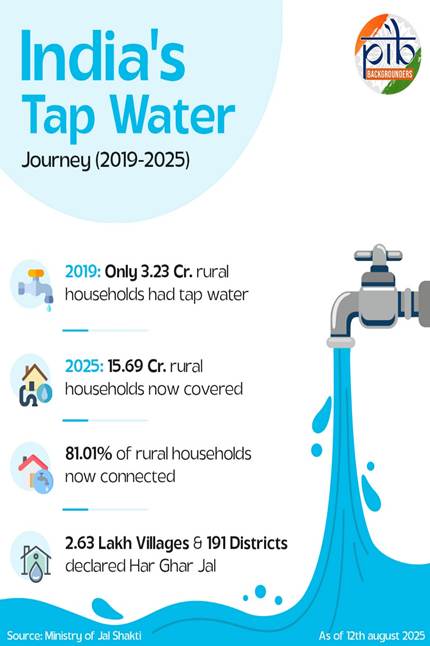
Blueprint of Change: Enablers of Transformation
At the heart of the Jal Jeevan Mission is a paradigm shift—from water as a government service to a community-owned resource. This vision has been made possible through a robust framework that emphasizes decentralization, participation, and sustainability:
- Decentralized Planning: Villages are empowered to design and execute their own water supply systems through Village Action Plans.
- Community Ownership: Local institutions such as Village Water and Sanitation Committees (VWSCs) are responsible for planning, implementation, and maintenance.
- Water Quality Monitoring: Over 24.80 lakh women have been trained to conduct water tests using Field Test Kits, making water safety a community-led effort.
- Sustainability: Water source sustainability and greywater management have been integrated to ensure long-term water security.
- Capacity Building: Widespread training and IEC (Information, Education, Communication) campaigns have fostered awareness and behavioural change.
This is not merely a scheme, it is a movement bringing accountability, ownership, and purpose to village communities.
Villages In Charge: Women Leading the Way
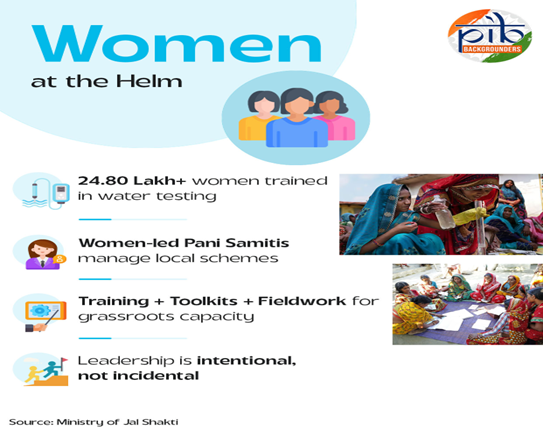
A defining feature of the Mission is its village-first approach and is explicitly built on a community-led philosophy. It emphasizes a bottom-up planning approach. Rural communities are not mere beneficiaries; they are active stakeholders.
Over 5.29 lakh VWSCs have been constituted. These bodies, supported by trained panchayat members and local volunteers, take ownership of their village’s water systems. The emphasis on women’s leadership is particularly notable. More than 24.80 lakh women have been trained to conduct water quality tests, embedding scientific knowledge and decision-making at the grassroots.
This approach ensures sustainability, accountability, and resilience long after the infrastructure is built.
Digital Backbone: Building Trust Through Technology
The Jal Jeevan Mission operates on a foundation of advanced digital systems that ensure accountability and transparency at every stage.
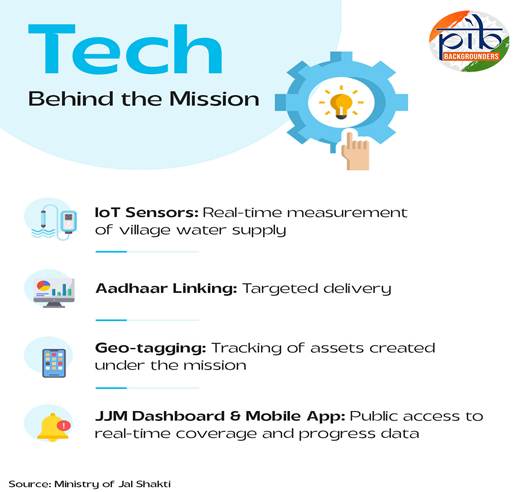
Together, these innovations strengthen citizen trust, enhance efficiency, and ensure that the system remains responsive and transparent.
Reimagining Rural Life
JJM is not merely about providing water; it is about unlocking opportunities and rewriting what is possible.
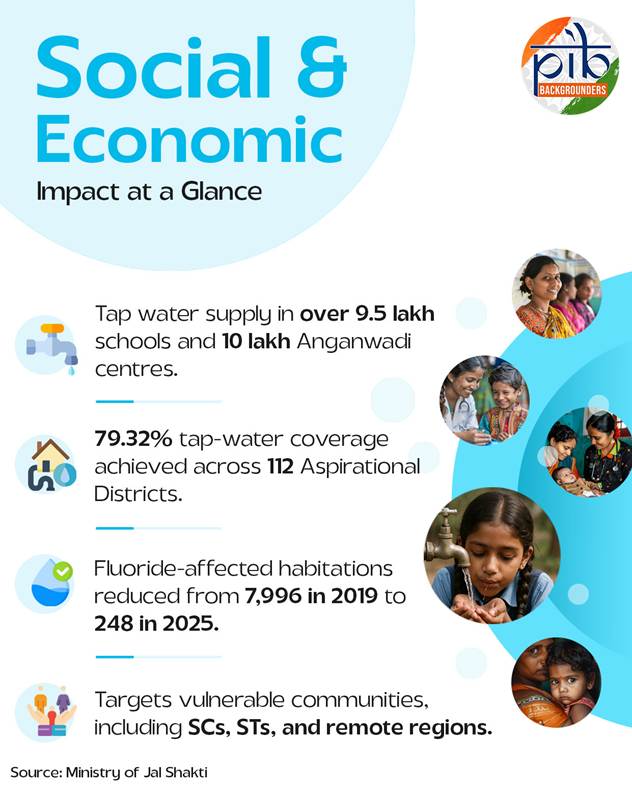
The ripple effects of the Jal Jeevan Mission extend far beyond clean water:
- Health: There has been a significant decline in waterborne diseases such as diarrhoea and cholera.
- Education: With reduced burden of water collection, girls are able to attend school more regularly.
- Livelihoods: Freed from time-consuming chores, women participate in self-help groups and microenterprises.
- Equity: Universal access ensures even the most marginalised communities are not left behind.
Conclusion: A Tap Today, A Better Tomorrow
The Jal Jeevan Mission is far more than a government programme. It is a lifeline.
It is the story of Sitabai, and many like her, who now wake up to a new reality, where water is at the doorstep, dignity is restored in the home, and hope flows freely through every lane and household.
With over 15.69 crore rural households, covering more than 81.01% of India’s villages, now receiving tap water connections, the mission stands as a remarkable testament to collective resolve and sustained effort. Recognizing its transformative impact, the mission has been proposed to be extended, reinforcing the government’s commitment to ensure every rural household is reached. Its continued progress is anchored in a renewed focus on long-term service delivery, operations and maintenance, and community participation.
As the Mission moves forward, its true legacy will not just lie in infrastructure laid but in lives uplifted and communities empowered. This is how development is brought home—one tap at a time.
References:
Ministry of Jalshakti:
Press Information Bureau:
Other Sources:
Kindly find the pdf file.
****
SK/M
(Explainer ID: 155030)
आगंतुक पटल : 4885
Provide suggestions / comments